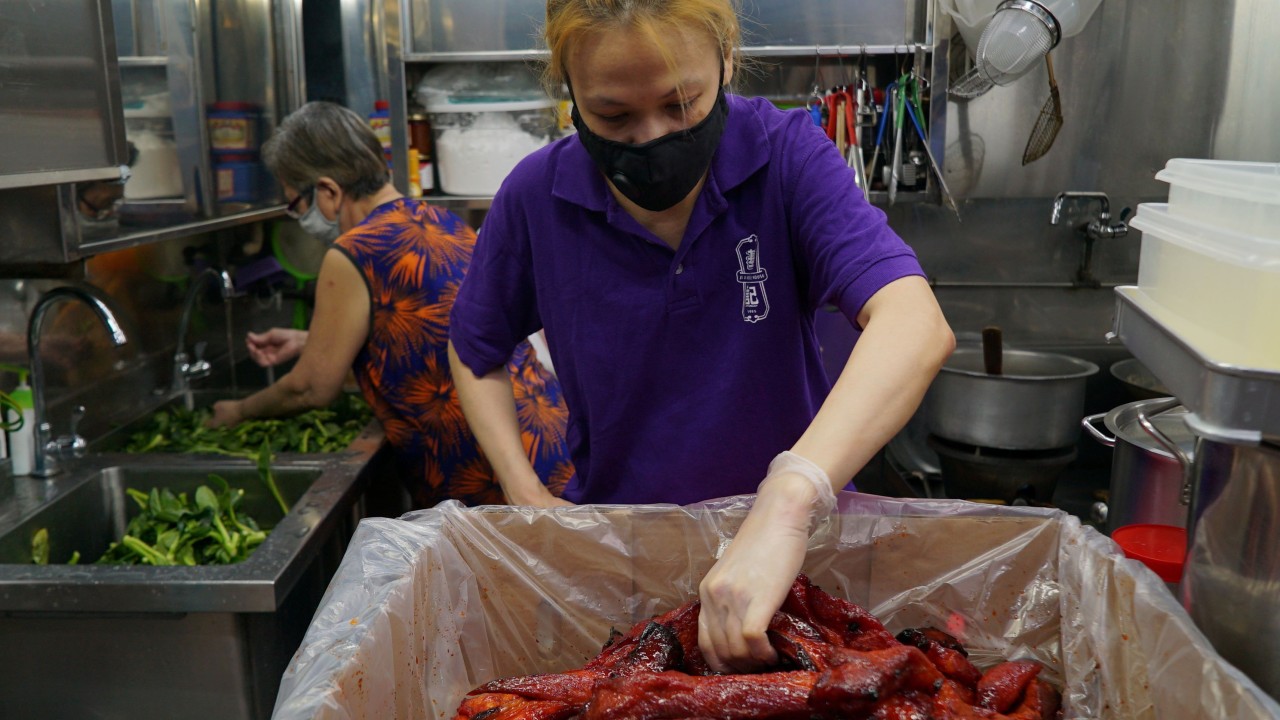
Singapore sees third straight quarterly GDP contraction, but signs point to recovery
- Singapore’s economy contracted 7.0 per cent year on year in the third quarter, but grew 7.9 per cent on a quarterly, seasonally adjusted basis
- Analysts predict the city state is only likely to see positive economic growth next year, due to the coronavirus pandemic
The economy, often seen as a bellwether for the region, contracted 7.0 per cent year on year in the third quarter, the Ministry of Trade and Industry (MTI) said in its estimates, but grew 7.9 per cent on a quarterly, seasonally adjusted basis.
“The improved performance of the Singapore economy in the third quarter came on the back of the phased reopening of the economy following the Circuit Breaker,” said the ministry, referring to its two-month partial lockdown from April to June.
Singapore firms in ailing industries struggle to get loans amid credit tightening
The growth from the second quarter was also attributed to the performance of the country’s manufacturing sector, which grew by 2 per cent in the third quarter on a year on year basis, reversing from the 0.8 per cent contraction in the previous quarter. The sector’s growth was supported by “robust global demand” for semiconductors and semiconductor manufacturing equipment, it said.
Meanwhile, the Monetary Authority of Singapore said in its semi-annual monetary policy statement on Wednesday that it would keep its monetary policy unchanged. “As core inflation is expected to stay low, MAS assesses that an accommodative policy stance will remain appropriate for some time,” the central bank said.
The ministry had earlier forecast that GDP for the full year would show a contraction of 5 per cent to 7 per cent, following four revisions.
Singapore has recorded nearly 58,000 coronavirus infections, with about 99 per cent of the cases reported as recovered. The country lifted its two-month partial lockdown, or so-called circuit breaker, in June, and it has since embarked on a three-phase resumption of activities. Its latest move saw more employees being allowed back to the workplace, with work-related events, such as seminars and meetings, now permitted.
Singapore’s economy shrinks by over 40 per cent in Q2, entering recession
Analysts were careful not to read too much into the trade ministry’s outlook for economic recovery, with Selena Ling, head of treasury research and strategy at OCBC Bank, noting that it would likely not be until next year that the city state climbs out of negative GDP territory.
Ling added that Singapore’s economic prospects would largely depend on how other countries in the region are coping with the virus, given Singapore’s economic ties with those countries.
Lee Ju Ye, an economist with Maybank Kim Eng, said that China‘s faster-than-expected recovery was a positive sign for Singapore. The country’s non-oil domestic exports to China, for example, jumped to the highest monthly level in August, driven by both electronics and non-electronics goods.
Singapore plans for further reopening, offers funds for people to have babies
Ling of OCBC Bank said that because China is one of Singapore’s key trading partners and investment destination, “a stable China recovery story would bode well in general for regional trade and growth”.
“But I think we also need to take the view that it is not just about China alone – the global demand story is also very important,” she added.
On Monday, Malaysia announced tighter restrictions on regions including Sabah, Kuala Lumpur, Selangor and Putrajaya, while Indonesia is still recording thousands of new infections each day.

02:13
‘Last-generation’ Singapore hawker fights to weather pandemic
“I think it‘s a very fluid situation now. Until you get a vaccine and an effective deployment of the vaccine, you are going to get these waves of ups and downs in terms of infections … and in turn, it will be weighing on business and consumer confidence” in Singapore, Ling said.
Lee agreed that the situations in Indonesia and Malaysia could weigh on Singapore‘s economic recovery, which border openings likely further delayed, exacerbating the challenge of foreign worker shortages. Stringent lockdowns in neighbouring countries could also disrupt supply chains and trade, she said.
Singaporeans snap up tickets for A380 restaurant, ‘cruises to nowhere’
“In that case, the likelihood of a US fiscal stimulus, for instance, appears to be higher,” she said, adding that it could bode well for countries in the region, including Singapore.
“People also view Biden as slightly less antagonistic towards China, so on the trade side, that could potentially have a slight, positive effect.”

